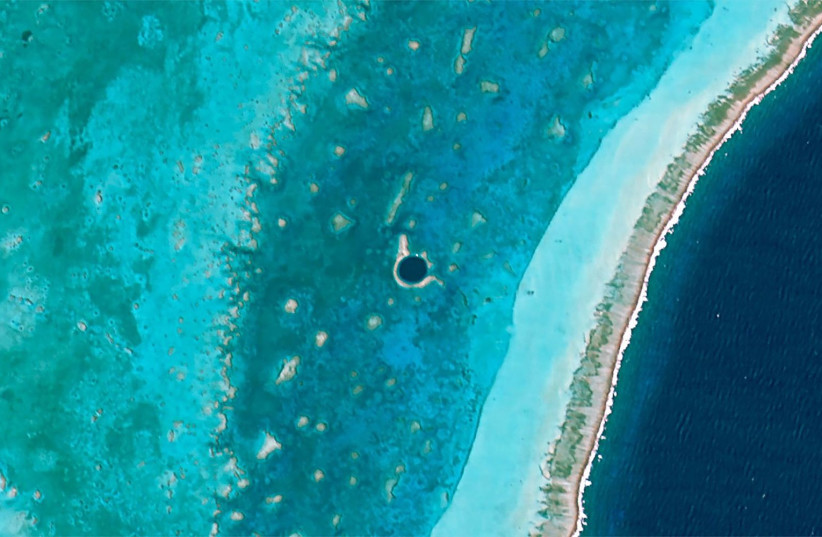What did divers discover in Belize’s Great Blue Hole?
Divers reached the bottom of Belize’s iconic Great Blue Hole – only to discover that the pristine natural wonder isn’t so pristine after all and is actually full of disturbing debris.
The Great Blue Hole is a giant marine sinkhole off the coast of Belize in the Caribbean that has left scientists and tourists curious for years. It extends over 318 meters, is about 124 meters deep, and is considered one of the leading attractions in the country.
A team of divers from Aquatica Submarines went on an expedition in 2018 but went viral this week as “proof that humans are terrible”.
The goal of the expedition, funded by billionaire Richard Branson was to reach the bottom and create a 3D map of the sinkhole. When the team, including Branson, first reached the bottom they marveled at marine animals such as sea turtles, reef sharks, and giant corals. However, when they reached a depth of 90 meters, life began to disappear.
Erika Bergman, who was part of the expedition, explained that a thick layer of toxic hydrogen sulfide stretched over the surface of the sinkhole and prevented oxygen from reaching the inside.
![Satellite of Belize's Great Blue Hole. (credit: Wikimedia Commons) Satellite of Belize's Great Blue Hole. (credit: Wikimedia Commons)]() Satellite of Belize’s Great Blue Hole. (credit: Wikimedia Commons)
Satellite of Belize’s Great Blue Hole. (credit: Wikimedia Commons)
 Satellite of Belize’s Great Blue Hole. (credit: Wikimedia Commons)
Satellite of Belize’s Great Blue Hole. (credit: Wikimedia Commons)Human corpses found
“We found conches and conch shells and hermit crabs that had fallen into the hole and suffocated,” she said in an interview at the time.
The team also found a two-liter Coke bottle that had made its way to a depth of more than 100 meters, as well as a lost GoPro camera.
A more shocking discovery awaited them next to the garbage – there were also two human bodies, which likely belonged to two of the three divers who were lost inside the sinkhole on a previous expedition.
“We found the resting place of a couple of folks, and we very respectfully let the Belize government know where we found them. Everyone decided that we would just not attempt any recovery. It’s very dark and peaceful down there, just kind of let them stay,” Bergman said.
Not all of the team’s discoveries were so grim. The divers also located stalactites, a type of mineral formation that usually hangs from the roof of a cave. The stalactites proved that the site was once a dry cave for prehistoric life.
The scientists believe that the cave was formed during the last ice age, and was flooded and collapsed 14,000 years ago as the ice age ended and the sea level rose.
The expedition’s discoveries went viral this week and many people online expressed shock at the disturbing findings.
“Is there a place for humans to leave clean of their filth?” wrote one surfer.
“Even a place humans have never visited contains so much of our trash. Humanity is horrible,” added another.
Branson described the expedition as “one of the starkest reminders of the danger of climate change that I have ever seen.”
“The real monsters in the ocean are climate change and plastic. Unfortunately, we saw plastic bottles at the bottom of the pit which is the real scourge of the ocean. We all have to get rid of single-use plastic,” Branson concluded.





Comments are closed.